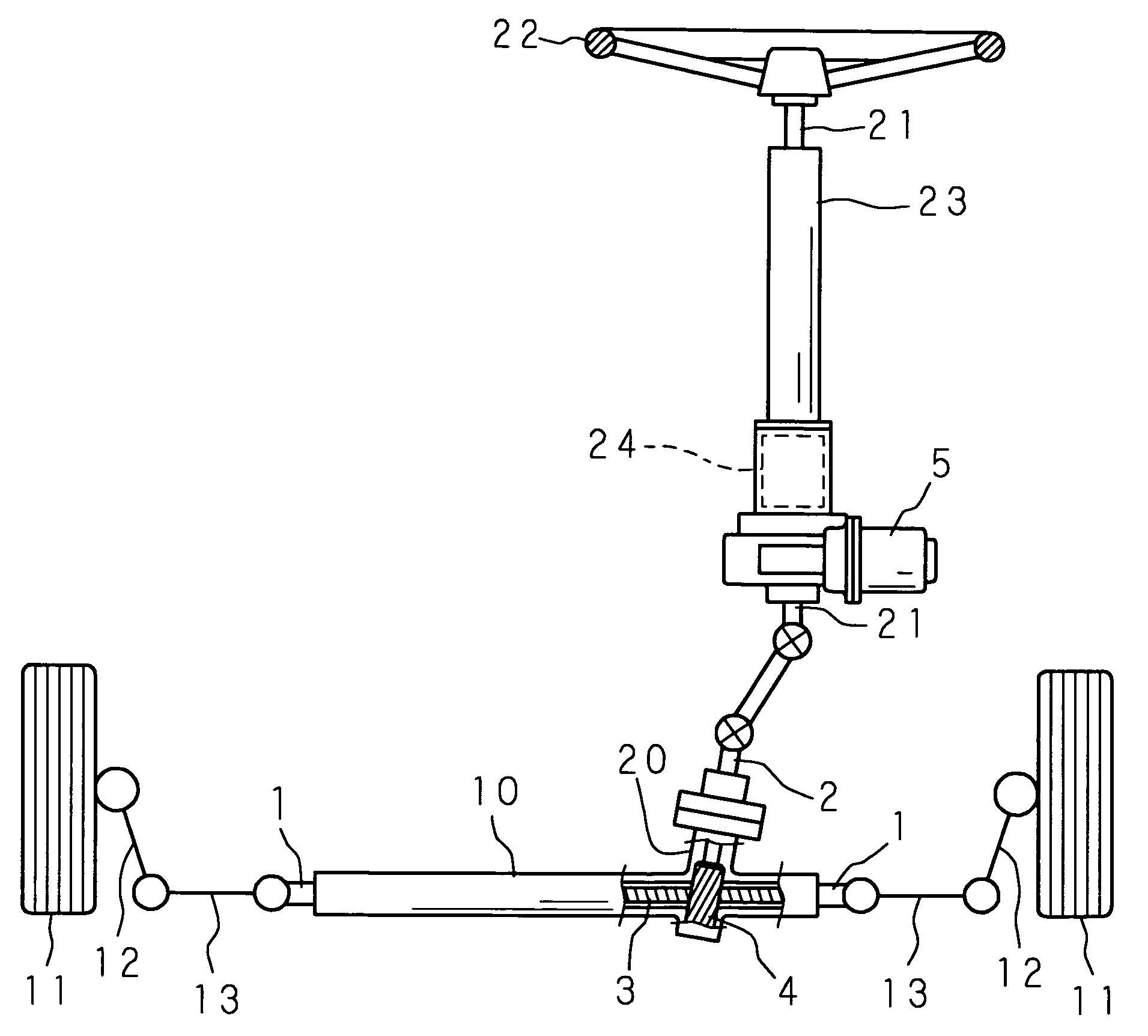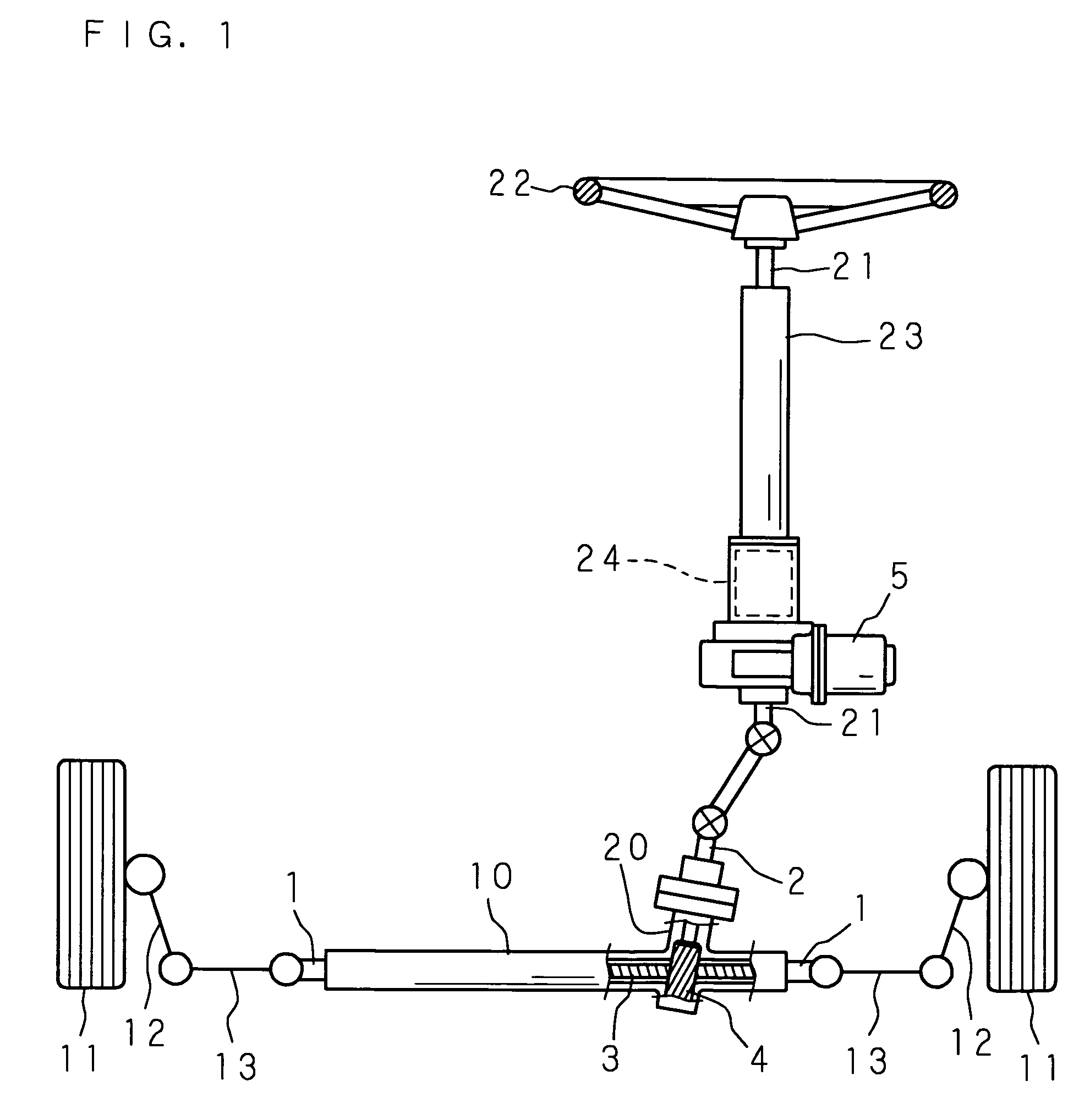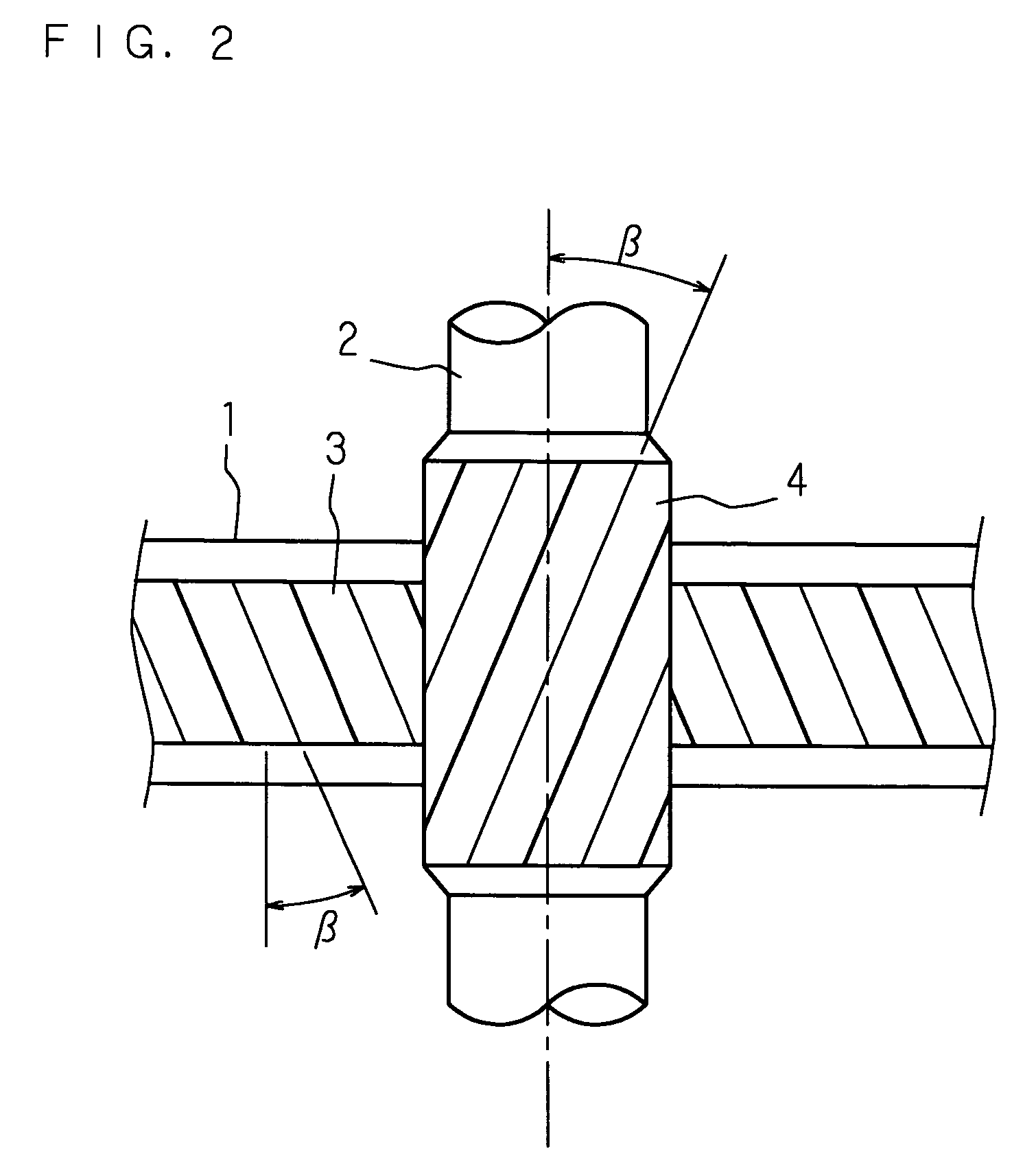Rack-and-Pinion Steering Apparatus
a steering apparatus and rack and pinion technology, applied in mechanical devices, gearing, hoisting equipment, etc., can solve the problems of strict control of the pressurizing load of the pressurizing means, degrading the steering feeling, and difficult to execute micro adjustment of the steering operation, so as to reduce the friction of the meshing and stablely offer smooth and comfortable steering feeling over a long time.
- Summary
- Abstract
- Description
- Claims
- Application Information
AI Technical Summary
Benefits of technology
Problems solved by technology
Method used
Image
Examples
Embodiment Construction
[0041]Hereunder, the present invention will be described in details, referring to the accompanying drawings showing the embodiments thereof. FIG. 1 is a schematic drawing showing an overall structure of a rack-and-pinion steering apparatus according to the present invention. In FIG. 1, numeral 1 designates a rack shaft, and the rack shaft 1 is movably supported in an axial direction thereof inside a cylindrical rack housing 10, so as to extend in a left and right direction of a vehicle body, which is not shown. The respective ends of the rack shaft 1 projecting from both sides of the rack housing 10 are connected to knuckle arms 12, 12 of the left and right front wheels 11, 11, serving as the wheels for steering, via respective tie rods 13, 13.
[0042]To a portion of the rack housing 10 close to a lateral end thereof, a pinion housing 20 is connected such that the central axes intersect with each other, and inside the pinion housing 20 a pinion shaft 2 is pivotably supported around it...
PUM
 Login to View More
Login to View More Abstract
Description
Claims
Application Information
 Login to View More
Login to View More - R&D
- Intellectual Property
- Life Sciences
- Materials
- Tech Scout
- Unparalleled Data Quality
- Higher Quality Content
- 60% Fewer Hallucinations
Browse by: Latest US Patents, China's latest patents, Technical Efficacy Thesaurus, Application Domain, Technology Topic, Popular Technical Reports.
© 2025 PatSnap. All rights reserved.Legal|Privacy policy|Modern Slavery Act Transparency Statement|Sitemap|About US| Contact US: help@patsnap.com



